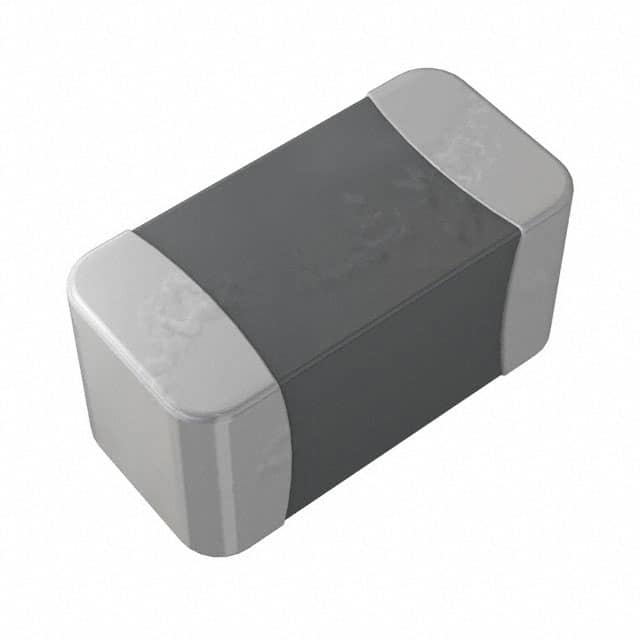Consulte las especificaciones para obtener detalles del producto.

NTCG163EH101HT1
Product Overview
Category
The NTCG163EH101HT1 belongs to the category of thermistors.
Use
It is commonly used for temperature sensing and compensation in various electronic devices and systems.
Characteristics
- High sensitivity to temperature changes
- Small size for easy integration into electronic circuits
- Wide operating temperature range
- Reliable and accurate temperature measurement
Package
The NTCG163EH101HT1 is typically available in a small surface-mount package, making it suitable for compact electronic designs.
Essence
This thermistor provides precise temperature measurements and is essential for maintaining optimal performance in electronic systems.
Packaging/Quantity
It is usually supplied in reels containing a specific quantity, such as 1000 pieces per reel.
Specifications
- Resistance at 25°C: 100 ohms
- Tolerance: ±3%
- Operating Temperature Range: -40°C to 125°C
- Thermal Time Constant: 5 seconds (in still air)
Detailed Pin Configuration
The NTCG163EH101HT1 has two pins for connection. The pinout configuration is as follows: - Pin 1: Connected to one end of the thermistor element - Pin 2: Connected to the other end of the thermistor element
Functional Features
- Non-linear resistance response to temperature changes
- High sensitivity for accurate temperature detection
- Stable and reliable performance over a wide temperature range
Advantages
- Precise temperature measurement
- Compact size for easy integration
- Wide operating temperature range
Disadvantages
- Non-linear response requires calibration for accurate temperature readings in some applications
- Limited self-heating capability due to small size
Working Principles
The NTCG163EH101HT1 operates based on the principle of negative temperature coefficient (NTC) thermistors. As the temperature changes, the resistance of the thermistor varies inversely, allowing it to accurately sense and measure temperature.
Detailed Application Field Plans
The NTCG163EH101HT1 is widely used in various applications, including: - Temperature monitoring in automotive electronics - Thermal management in consumer electronics - Temperature compensation in industrial control systems - Medical device temperature sensing
Detailed and Complete Alternative Models
Some alternative models to the NTCG163EH101HT1 include: - NTCG163EH103HT1: Similar characteristics with a slightly different resistance value - NTCG163EH104HT1: Higher resistance variant for specific temperature sensing applications - NTCG163EH102HT1: Lower resistance variant suitable for different temperature ranges
In conclusion, the NTCG163EH101HT1 thermistor offers precise temperature sensing and compensation capabilities, making it an essential component in various electronic systems and devices.
Word Count: 411
Enumere 10 preguntas y respuestas comunes relacionadas con la aplicación de NTCG163EH101HT1 en soluciones técnicas
What is NTCG163EH101HT1?
- NTCG163EH101HT1 is a type of NTC thermistor, which is a temperature-sensitive resistor that exhibits a decrease in resistance as the temperature increases.
What are the typical applications of NTCG163EH101HT1?
- NTCG163EH101HT1 is commonly used in temperature sensing and compensation, inrush current limiting, and temperature control circuits in various electronic devices and systems.
What is the resistance-temperature characteristic of NTCG163EH101HT1?
- The resistance of NTCG163EH101HT1 decreases exponentially with increasing temperature, making it suitable for precise temperature measurement and control.
How does NTCG163EH101HT1 contribute to inrush current limiting?
- NTCG163EH101HT1 can be used to limit inrush current by temporarily presenting a higher resistance when power is initially applied, thus protecting sensitive components from excessive current flow.
Can NTCG163EH101HT1 be used in battery management systems?
- Yes, NTCG163EH101HT1 is often employed in battery management systems for monitoring and controlling the temperature of batteries to ensure safe and efficient operation.
What are the key parameters to consider when integrating NTCG163EH101HT1 into a technical solution?
- Parameters to consider include the nominal resistance at a specific temperature, the B-value (thermal coefficient), maximum operating temperature, and thermal time constant.
How does NTCG163EH101HT1 compare to other types of temperature sensors?
- NTCG163EH101HT1 offers advantages such as high sensitivity, small size, fast response time, and low cost compared to many other temperature sensing technologies.
What are the typical temperature ranges within which NTCG163EH101HT1 operates effectively?
- NTCG163EH101HT1 can operate effectively within a wide temperature range, typically from -40°C to 125°C, making it suitable for diverse applications.
Are there any precautions to consider when designing with NTCG163EH101HT1?
- It's important to protect NTCG163EH101HT1 from mechanical stress, moisture, and excessive voltage or current to ensure its reliable performance and longevity.
Where can I find detailed technical specifications and application notes for NTCG163EH101HT1?
- Detailed technical specifications and application notes for NTCG163EH101HT1 can be found in the datasheet provided by the manufacturer or on their official website.

